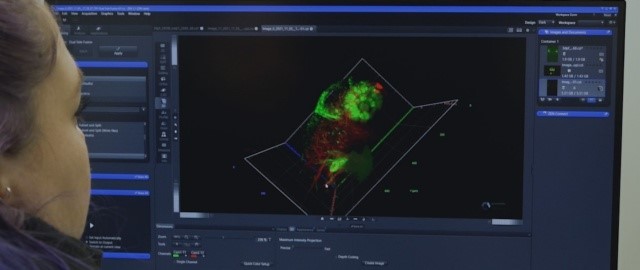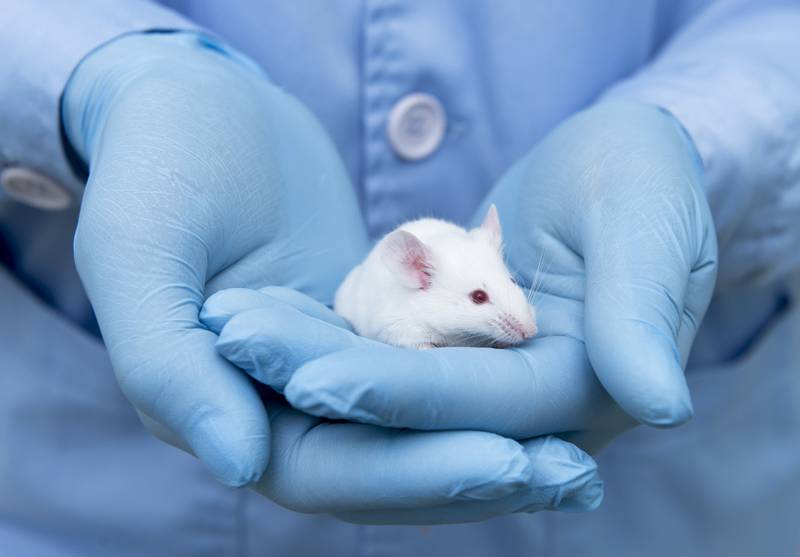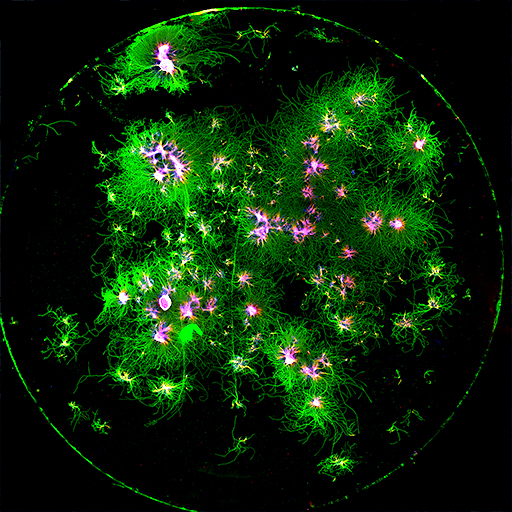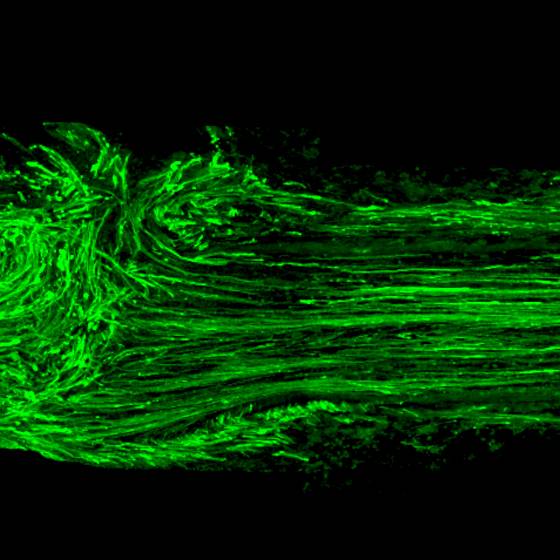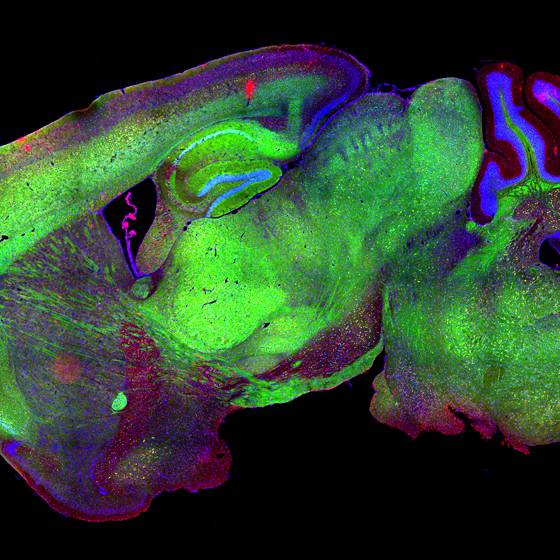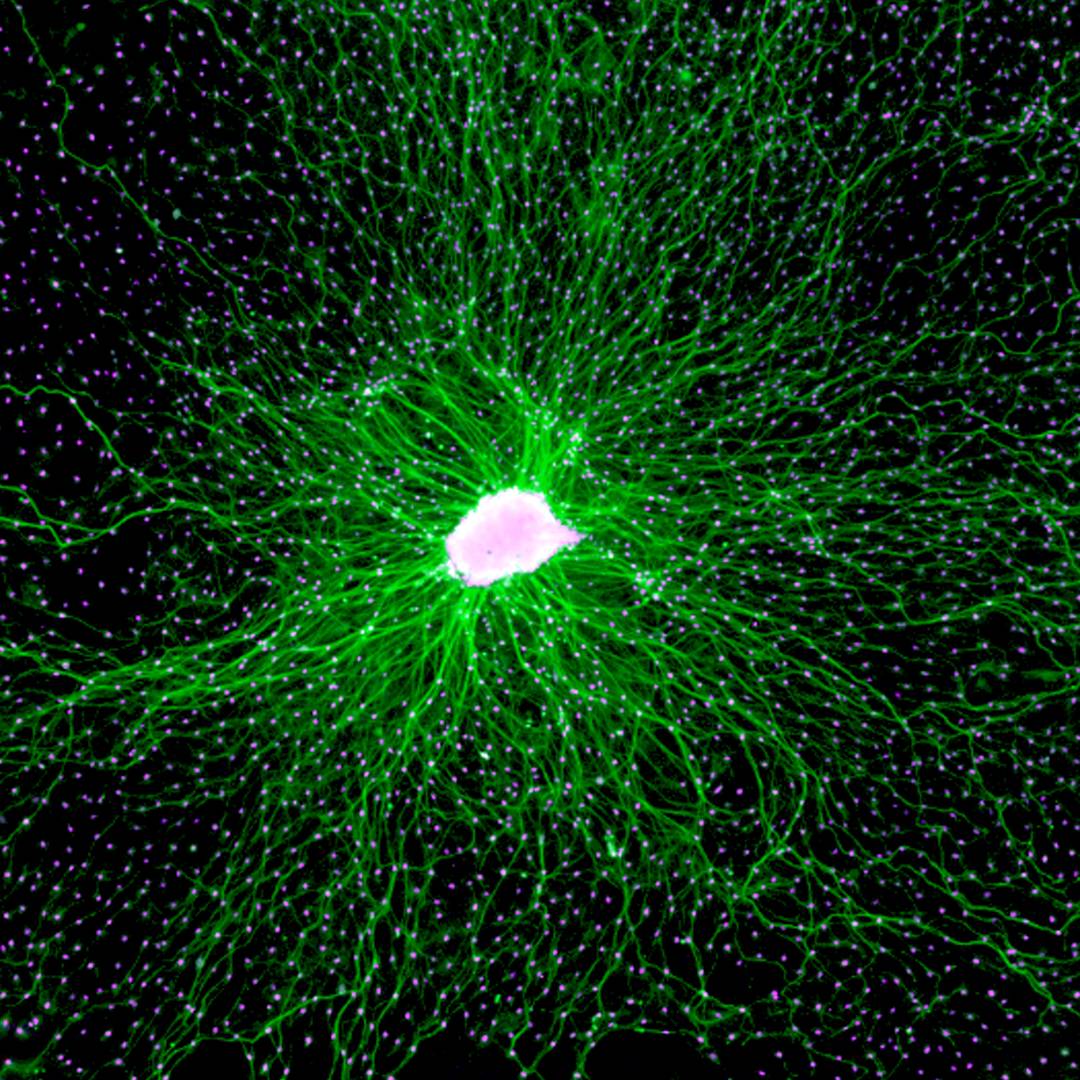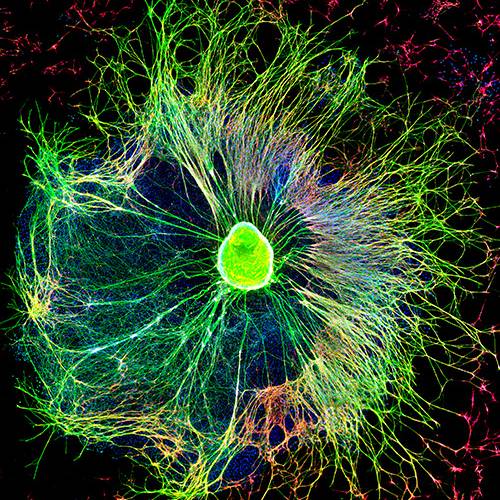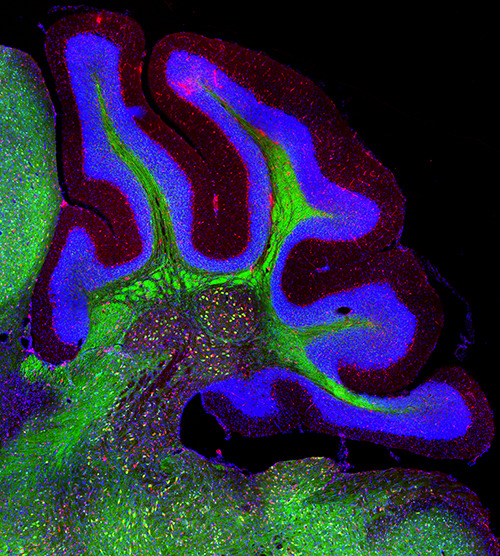Schwann cell regulation of axonal regeneration
In the mammalian nervous system, the regenerative capabilities of neurons show regional variability. In the peripheral nervous system (PNS), axons efficiently regenerate after nerve damage associated to the pro-regenerative effect of Schwann cells. In contrast, in the central nervous system the regenerative capability is poor due to both neuronal intrinsic limitations and glial responses that restrict regeneration. Although, axonal regeneration in the periphery show good regenerative capacity in preclinical models, it still represents a clinical problem associated to delayed repair of peripheral nerves, and the negative effects of aging and other conditions, including diabetes, for axonal regeneration and functional recovery. In the lab, we study how Schwann cells reprogramming regulates axonal regeneration after nerve damage, in order to manipulate this response to enhance axonal regeneration.
Longitudinal section of a sciatic nerve, with regenerating axons crossing a surgically repaired region, axons are labelled using an antibody against the protein SCG10.

Schwann cell exosomes enhance axonal regeneration
In the peripheral nervous system, regeneration of injured axons depends on the reprogramming of Schwann cell from a differentiated phenotype into a phenotype known as repair Schwann cells. Our lab was the first to demonstrate that Schwann cell exosomes enhanced axonal regeneration in vitro and in vivo in laboratory animals, an effect we later showed was dependent on the reprogramming of Schwann cells into a repair phenotype, and associated with the loading of specific miRNA into exosomes and their transfer to axons. In addition, we are exploring the effects of aging, chronic denervation and diabetes in Schwann cell reprograming and axonal regeneration, in order to develop interventions to enhance axonal regeneration in these conditions.
People involved

Daniela Rebolledo
Senior Research Assistant

I am a Biochemist from Pontificia Universidad Católica de Chile (PUC) and PhD in Cell and Molecular Biology from the same university. My PhD thesis research was performed at the Physiology and Biophysics department, University of Washington. My research has focused on the physiology of the neuromuscular system and the pathological mechanisms behind neuromuscular disorders of diverse etiology.

Karina Girardi do Carmo
Postdoctoral fellow

Biologist, Ph.D., and MSc in Cell and Molecular Biology from Oswaldo Cruz Foundation (Fiocruz/RJ). Studying age-dependent decline of regenerative capacity in the peripheral nervous system. Mainly focusing on the contribution of metabolic profile of aging Schwann cells in senescence and particularly exploring the epithelial-mesenchymal transition (EMT) like process.
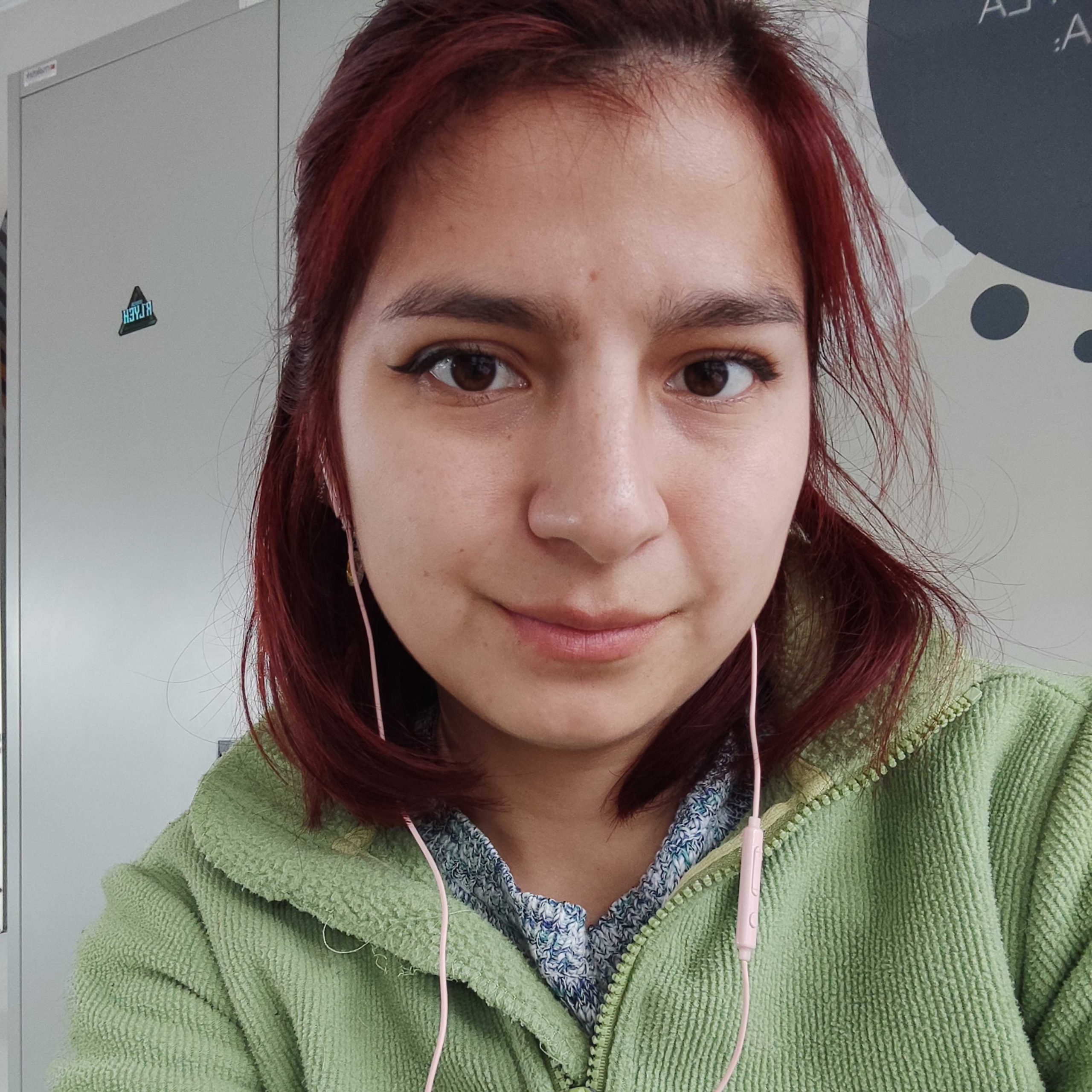
Renata Gallardo
Research Assistant

I studied Medical Technology at the Universidad Mayor acquiring knowledge in histological techniques, immunohistochemistry and immunofluorescence. I am interested in learning more from the world of neurosciences and related pathologies to find new treatments to improve the quality of life in aging.

Camila Duran
Research Assistant

Molecular Biotechnology Engineer from the University of Chile with experience in the study of the cellular and molecular mechanisms of Cdk5 (kinase) involved in peripheral nociception, specifically in its participation in orofacial pain signaling (odontoblasts, trigeminal ganglion and spinal trigeminal nucleus).
Related Publications
PUBLICATIONSReviewNervous System FxPNS
octubre 4, 2021
Transfer of vesicles from schwann cells to axons: a novel mechanism of communication in the peripheral nervous system.
Lopez-Verrilli MA, Court FA.
Front Physiol. 2012 Jun 13;3:205. doi: 10.3389/fphys.2012.00205. eCollection 2012.
PMID: 22707941
octubre 4, 2021
A BAX/BAK and cyclophilin D-Independent intrinsic apoptosis pathway.
Zamorano S, Rojas-Rivera D, Lisbona F, Parra V, Court FA, Villegas R, Cheng EH, Korsmeyer SJ, Lavandero S, Hetz C.
PLoS One. 2012;7(6):e37782. doi: 10.1371/journal.pone.0037782. Epub 2012 Jun 12.
PMID: 22719850
octubre 4, 2021
Hypothyroidism in the adult rat causes incremental changes in brain-derived neurotrophic factor, neuronal and astrocyte apoptosis, gliosis, and deterioration of postsynaptic density.
Cortés C, Eugenin E, Aliaga E, Carreño LJ, Bueno SM, Gonzalez PA, Gayol S, Naranjo D, Noches V, Marassi MP, Rosenthal D, Jadue C, Ibarra P, Keitel C, Wohllk N, Court F, Kalergis AM, Riedel CA.
Thyroid. 2012 Sep;22(9):951-63. doi: 10.1089/thy.2010.0400. Epub 2012 Aug 7.
PMID: 22870949
PUBLICATIONSDataPNSCNSNeuroRegeneration
octubre 4, 2021
Activation of the unfolded protein response enhances motor recovery after spinal cord injury.
Valenzuela V, Collyer E, Armentano D, Parsons GB, Court FA, Hetz C.
Cell Death Dis. 2012 Feb 16;3(2):e272. doi: 10.1038/cddis.2012.8.
PMID: 22337234
Related News
Microscopía Light-Sheet: conoce la nueva tecnología disponible en la U. Mayor
julio 4, 2022
Esta herramienta permite documentar detalles de tejidos, células y organismos vivos y fijados, a un nivel sin precedentes, gracias a que proyecta una “hoja” de luz de baja intensidad directamente en…
¿Efecto Benjamin Button?: Científico logró rejuvenecer a un grupo de ratones
junio 6, 2022
El Dr. Felipe Court, director del Centro de Biología Integrativa U. Mayor, explica que «logran reprogramar para que se eliminen las marcas epigenéticas que se van acumulando con el envejecimiento y…
